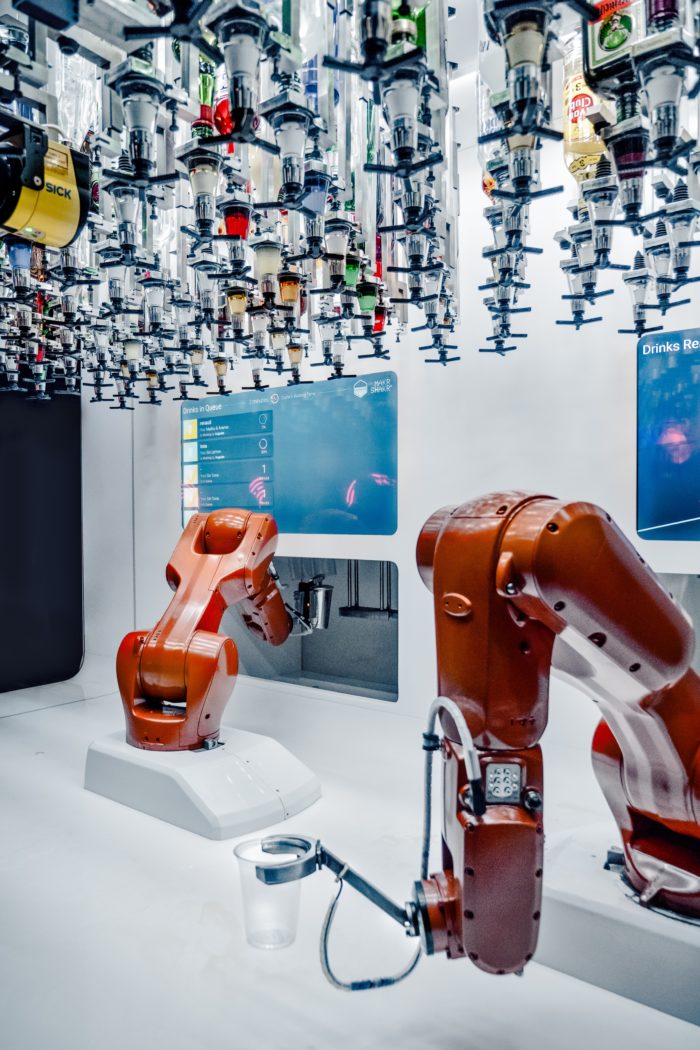Digital World
COVID-19’s Future of Work Wrecking Ball
As COVID-19 cuts its path across the world, attention is shifting away from the immediate need to contain a public health crisis and toward the crisis’s long-term impact on jobs, workers, and the “future of work.” What was once a long-term, wonk-dominated discussion centered on upskilling and vulnerability to task automation has devolved into how to best staunch the loss in jobs, incomes, and livelihoods.
Over the span of just one month, the United States has shed more than 22 million jobs, erasing all gains from the post-2009 recovery. As decision-makers develop policy responses and unlock funding mechanisms, future-of-work resiliency must be baked into the recovery.
Zoom Meetings – For Some
As the virus spreads and “stay at home” orders proliferate, techno-optimists have wasted no time in proclaiming the arrival of their long-dreamed-of future of work. Articles tout the benefits of remote work, the untapped power of remote teams, and even how work from home could lead city-bound knowledge workers to decamp for rural areas. Each morning, legions of skilled workers take part in their very own future-of-work experiments by cracking open their laptops and launching Zoom meetings in an attempt to eke out a productive workday.
But proclaiming the arrival of the future of work from your kitchen table is a rare privilege. The jobs hardest hit by COVID-19 are “high contact” and low-wage positions in leisure, hospitality, entertainment, and restaurants. Despite pre-COVID-19 forecasts indicating these positions would be some of the most vulnerable to technology and automation, policymakers used them as job and consumer spending engines. By February 2020, nearly one in 10 American workers was employed in one of these industries.
Just two months on, 15 million of these jobs are menaced by COVID-19, with hospitality-heavy Las Vegas, Orlando, and New York particularly hard hit. As COVID-19 ushers in a “new” future of work for the skilled, its effects could supercharge job, skill, and income bifurcation with the new have-nots — workers lacking the skills (or flexibly) to create value from their kitchen tables.

Policymakers have rightly prioritized immediate needs by passing the CARES Act, which beefs up supplementary unemployment insurance and unlocks $1,200 cash payments for individuals. But they should also be planning for the dual futures of work that COVID-19 leaves in its wake: Unemployed workers should be armed with the skills needed to return to quality jobs. Slipping back into the familiar pattern of job growth through low-wage — and easily automatable — service-sector jobs would only institutionalize vulnerability to future shocks — be they pandemic- or automation-related.
COVID-19’s Automation Incentive
COVID-19 and the ensuing recession will lead to the re-ordering of economies, jobs, and the world of work. While growth and many jobs will return as the economy reopens, some losses will be permanent. Over the course of the past 30 years — and three recessions — the lion’s share of job loss during recessions has occurred across routine — and easy to automate — positions.
Furthermore, policymakers have created incentivizes for companies to introduce automation during recessions. Record-low interest rates ensure firms can borrow to invest in automation and new technologies. Chronic underinvestment in vocational training and education means employers have less incentive to re-hire workers laid off from “at-will” employment.

But this COVID-19-fueled recession will be different. With fallout from the virus coursing through their lines of business, companies will seek to automate in order to ensure at least a minimum level of service during the next shock. Ongoing trends such as platform work, or the adoption of AI, could hasten as companies build pandemic resilience into their business models.
A meal delivery service that invests in automation will face less disruption during the next shock than one that requires a human to strap on a mask and whisk food to your door. Minimum service achieved through automation will give some companies a leg up over competitors that fail to automate.
Furthermore, despite the looming recession, the very companies best equipped to implement the next wave of technology and automation remain well-capitalized. New technologies and services will create many jobs. But their creation could be concentrated among technology champions, and in “superstar cities” packed with the very same skilled workers currently benefiting from the work-from-home boon.
This is the perfect opportunity for policymakers to invest in data-driven labor market and recession analysis to ensure that the benefits from automation are distributed equally. And that benefits — such as a form of minimum basic income — are targeted at those truly unable to find their niche in the post-COVID-19 economy.
Preparing for Future Shocks, Today
COVID-19 has already shown the fragility of economies, jobs, and social safety nets. But it is the ninth significant pandemic to hit the world since the appearance of the Spanish flu in 1918-1919. Importantly, the future of work will no longer be a ring-fenced policy domain in which the impacts of technology and automation on workers, jobs, and labor markets are weighed. The rapid spread of COVID-19 shows the awesome power of fast-moving externalities, and the need to plan for them.
But COVID-19 is not the last shock that policymakers and the public will experience. Going forward, policymakers will have the added — and perhaps unwanted — responsibility of planning for future shocks. Reducing worker vulnerability to shocks — be they pandemic-, climate-, or automation-related — will need to be part of the future-of-work debate through scenario planning and the use of big data.
We know that other pandemics will appear, and that forces such as climate change could exert a far more significant and sustained impact. Preparing for future shocks — and institutionalizing resilience — will take long-term investments in institutions, and greater transatlantic collaboration.
The Future of Work, Interrupted
The future of work arrived faster than anyone thought possible, in a form that no one would have hoped for. What was once a long-term project devoted largely to insulating workers and communities from the ravages of technology and automation has been turned on its head. For the skilled, COVID-19 has largely entailed minimum disruption and has even opened up new modes of collaboration and creativity.
For many others, the appearance of COVID-19 has caused complete disruption that will require long-term recovery and support. As policymakers work to stem the loss of jobs and livelihoods caused by the pandemic, they would be wise to consider not just the impact of technology and automation on workers, but also the need to start planning for the next shock itself. The current crisis may similarly turn out to be the kick that forces us to build a more resilient future.
As COVID-19 continues to impact communities across the United States, learn more about how Orlando, Las Vegas, and Riverside are planning for the future of work. VISIT TRANSATLANTIC CITIES AND THE FUTURE OF WORK